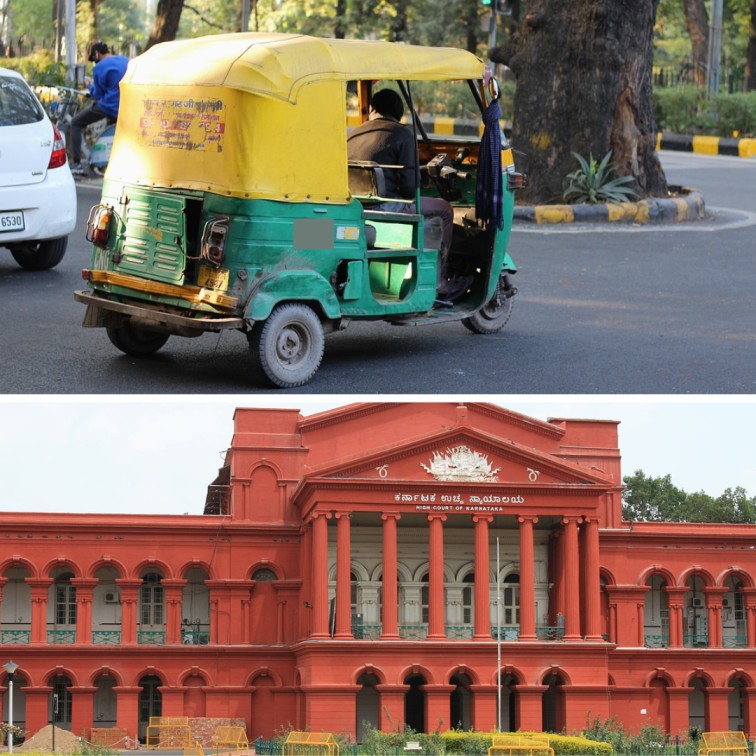Karnataka HC Stays 5% Cap By Taxi Aggregators On Service Fee For Online Auto Hailing

The notification which was issued by the transport department imposing a 5 percent cap on the collection of service charges by taxi aggregators was stayed by the Karnataka High Court on Wednesday. The State Government, while issuing the notice had to take into attention the Guidelines of Motor Vehicle Aggregators 2020, which carried the entire operations of transport aggregators, the court held.
However, the notice did not take into account the Guidelines of Motor Vehicle Aggregator 2020, and was released under Section 67 of the Motor Vehicles Act, the court said while justifying the suspension of the notification. A huge capital is invested in the business of Taxi aggregators by the biggest taxi drivers like Uber and Ola due to the market opportunities and popularity of this new niche market. Uber was the first company to revolutionize the taxi industry using the Taxi Aggregator business model.

Taxi Aggregators
For a company to be a taxi aggregator, the following conditions are important:
a) The aggregator should own and manage the web-based software application.
b) It should allow the potential customer to connect with persons providing services of a certain kind.
c) The connection of the service will be made using any application and a communication device.
d) Facilities should be provided under the brand name or trade name of the aggregator (definitely like Ola, Uber, Taxi, etc.).
It is unclear what actual market share the two companies have. Ola claims a 70% market share, while Uber claims a 50% market share by their calculations. However, most industry estimates put Ola’s market share at around 65%, with taxi aggregator Uber holding the rest. The main reason why Ola is leading the competition is that it has entered the market earlier and has the first mover advantage, it has achieved better market penetration (present in more than 104 cities) compared to Uber (present in only 29 Indian cities).
According to the latest research conducted in 2017, Uber’s market share (based on app downloads) was 50%, and Ola’s was 44%. Another interesting result that emerges from the research is that 58.50% of customers served by taxi aggregators are ambivalent customers who are indifferent to brand alternatives and only 41.50% of customers prefer one loyal brand. It’s a price game for most customers who check the prices of their companies when they need to commute and choose the cheapest one at the time. So, we see that 56% of respondents prefer to travel with both Ola and Uber, so market share doesn’t play a role. It only tells about past performance.

More importantly, what option does the customer choose when they want to travel? And this is something that both Giants (Ola and Uber) should focus on. Many new-age start-ups are very innovative in their business models. However, many of these follow the same type of model in another industry. A great example of such start-ups is the aggregator model. There is a dearth of other companies using this model in their respective fields, promoting as the “Uber of X industry”.
What is An Aggregator Business Model?
The aggregator business model is a byproduct of the information age. With the rise of the Internet, information has increased. Many different types of service providers have started their services online only. However, clients did not have the inclination, time, or know-how to search the Internet to find the best deal for themselves.
As a result, the aggregator model was created. An aggregator is a website that creates a brand, and creates partnerships with real service providers. The aggregator’s job is to collect information from different service providers, display it on their website and sell the product. The actual work of providing the service is performed by the service providers. From the customer’s perspective, aggregators help them avoid due diligence hassles.
On the aggregator site, all service providers are independent entities. They are not employed by the aggregator. So, they are free to decide. They usually choose to tie up with an aggregator because they can help with more business.

How does a aggregator model work?
- When a founder tries to start an aggregator company, the first thing he needs, is a partnership. The aggregator attempts to influence the service provider so they can help their marketing efforts by bringing in more customers. The result of this outreach is the signing of a partnership agreement between the service provider and the aggregator.
- Once a certain scale is reached in the partnership, the aggregator tries to create a brand. This is done with the help of large marketing campaigns.
- Founders also need to build a system that allows them to seamlessly communicate between service providers and customers while being a part of the circle themselves.
- Once the customer makes a payment after using the service, the money goes to the aggregator. As a rule, aggregators do not pay money immediately to service providers. Instead, they hold the money for some time and pay service providers at certain time intervals.
How do aggregators add value?
Aggregators create value for two groups of customers. The details are:

- The first group of customers is real users, i.e., customers of service providers. Aggregators create value for these customers by promising quality service delivery at a fair price. Customers can access competitive offers from multiple suppliers at the click of a button.
- The second group of customers for aggregators are service providers. Aggregators add value to service providers by marketing on their behalf. Aggregators allow companies to focus on execution when outsourcing the marketing function. Aggregators are able to generate economies of scale. Because their advertising and marketing efforts are so huge, they attract a large number of customers. Service providers gain access to these customers and can thrive if they provide quality service.
edited and proofread by nikita sharma




